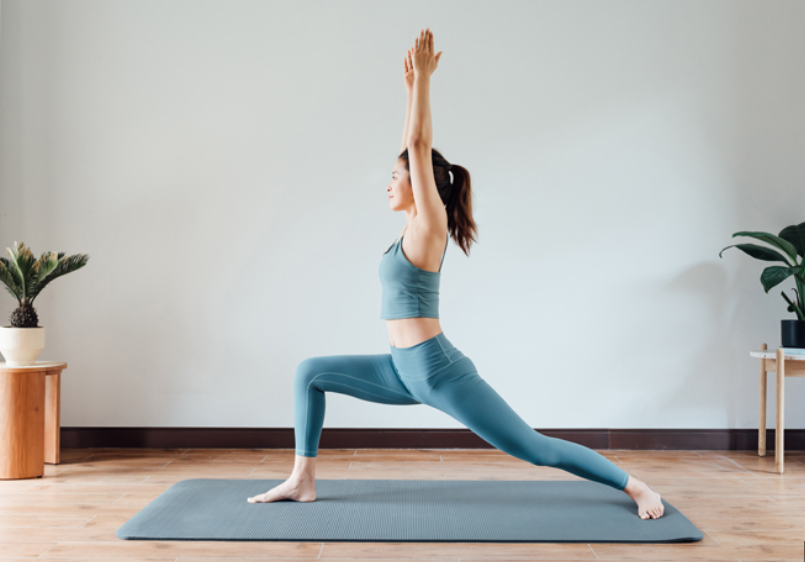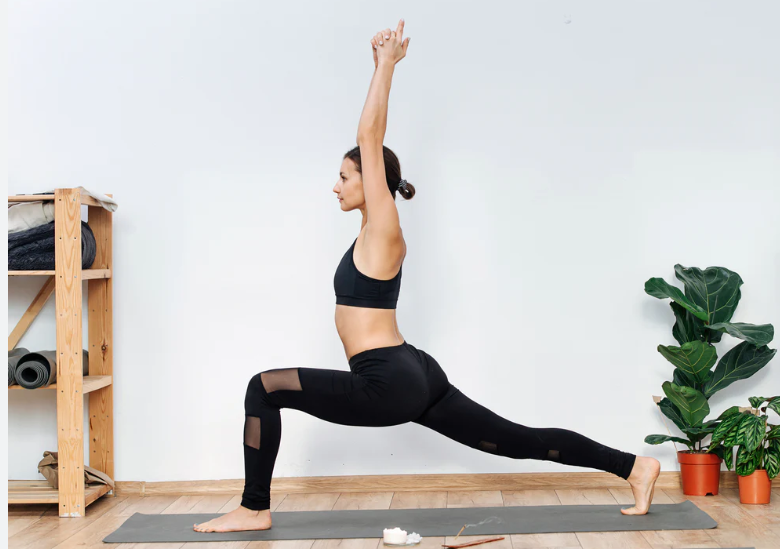Disclosure: This post may contain affiliate links. If you purchase through these links, we may earn a commission at no additional cost to you.
The Science of Heat & Mental Clarity
Hot yoga’s heated environment (95–105°F) pairs metabolic intensity with mindful movement. Research teams at Massachusetts General Hospital found that just one heated session per week reduced depressive symptoms in adults; half of the participants reached remission after eight weeks. Heat acts like an incubator for calm—it increases blood flow, triggers endorphin release, and builds tolerance to stress without the chaos of daily life.
Think of it as interval training for your nervous system: you visit discomfort, learn to breathe through it, and leave with a quieter mind.
High heat can feel intense, but it is also a controlled environment to practice emotional regulation.
Why Breath + Movement Unlock Clarity
Holding poses in heat demands focus. As your muscles soften, fascia releases, and breath slows, the parasympathetic nervous system steps in. This “rest-and-digest” mode lowers cortisol, opens mental space, and teaches you how to return to calm even when the room is sweltering.
- Endorphin release: The combination of heat and rhythmical movement leaves you with a post-class glow that feels earned.
- Neuroplasticity support: Repeatedly choosing calm under pressure rewires reactive patterns into steady responses.
- Focused awareness: Drishti (gaze) and mantra keep your mind anchored so wandering thoughts lose their grip.
“The heat is the landscape; your breath is the map. Keep following it and you’ll never get lost.” — HealthHub Teaching Collective
Mindful Rituals Before, During, After Class
Mental clarity begins long before the sweat. Approach class like a ritual, not a workout you sprint into. The more intention you carry, the more grounded you’ll feel walking out.
Pre-class (15 minutes)
- Sip 16 ounces of mineral-infused water; add a pinch of sea salt if you sweat heavily.
- Set one emotional intention (“I am here to soften my shoulders”) instead of chasing performance goals.
- Spend two minutes in child’s pose to anchor breath into the back body.
In-class anchors
- Channel your breath: inhale for four, exhale for six. This elongated exhale signals safety to your nervous system.
- Release jaw and fingertips—the first places tension hides.
- Choose a mantra like “Calm is my default” for challenging holds.
Teacher tip: If dizziness shows up, kneel or sit and maintain breath. Returning to stillness is a sign of wisdom, not weakness.
Post-class reset
- Pause before leaving the room; take five slow breaths to seal your practice.
- Replenish with electrolytes and a light protein-rich snack within 30 minutes.
- Journal one sentence: “When the heat peaked, I chose to…” Training recall cements your mental win.
Simple post-class reflections help you remember calm is a skill you are actively strengthening.
60-Minute Mental Clarity Class Map
Warmth to Cool Mind Sequence
- Arrival (8 minutes): Supine breath, knees knocking inward, guided visualization of “cool water” filling lungs.
- Ignition (12 minutes): Half-sun salutations, low lunge with cactus arms, chair pose with alternate heel lifts.
- Focus (10 minutes): Eagle pose flows, standing bow, triangle with three-breath holds.
- Strengthen (10 minutes): Plank to forearm plank, side plank with leg taps, boat pose pulsing with slow exhales.
- Release (10 minutes): Standing splits, wide-legged forward fold, seated forward fold with strap.
- Reset (5 minutes): Supported fish with block, legs up the wall, five-count box breathing.
- Savasana (5 minutes): Cool towel on forehead, mantra “I leave lighter than I arrived.”
Micro-Habits that Sustain the Mental Glow
Stabilizing your mindset requires off-the-mat habits too. Sprinkle these micro-practices throughout your week to keep clarity lingering longer than class.
Hydrate On Purpose
Track hydration goals and add electrolytes on practice days. A well-hydrated brain processes stress faster.
Evening Cool-Down
Take a lukewarm shower after class and finish with 30 seconds of cool water down the spine to calm inflammation.
Five-Breath Reset
During work breaks, stand tall, inhale arms overhead for four counts, exhale fold forward for six. Instant mood shift.
Screen-Free Start
Delay scrolling for 20 minutes after class. Let your nervous system absorb the relaxed state before re-engaging with dopamine hits.
Community & Support
Hot yoga is demanding—sharing the journey eases the heaviness. Find accountability buddies for morning classes, celebrate milestones (like holding crow without spiraling), and talk openly about mental shifts you notice. Collective encouragement keeps motivation high and loneliness low.
Many studios offer quiet recovery lounges. Use them. Sit with tea, journal, or simply breathe; you earned that pause.
Shared resilience deepens bonds—high heat is lighter when you’re surrounded by people chasing the same calm.
Hot Yoga Mental Health FAQ
How often should I practice for mental benefits?
Start with one class a week. Many notice shifts in mood and sleep within four sessions. If your schedule allows, work toward two classes with at least 48 hours between them.
What if I feel overwhelmed mid-class?
Signal your teacher, drop to child’s pose, or step outside for a minute. Returning after a mindful pause builds resilience and teaches your mind that you can re-enter calmly.
Can I pair hot yoga with therapy or medication?
Yes—hot yoga complements mental health support. Hydrate well, listen to your clinical team, and treat class as an additional tool, not a replacement.
Copy Link Share Tweet Pin
0 Press the arrow if this guide helped your mind feel cooler than the room.
Topics:
HealthHub Team
Wellness expert and certified instructor sharing evidence-based health tips and practical fitness advice to help you live your healthiest life.



